What Do Cockroaches Eat? What Keeps Them Coming to Your Home?
Cockroaches are many people’s nightmares and with a good reason. They crawl, they run fast, they get inside of your home, they can climb anything and scare you in the middle of the night.
It is not unheard of people waking up and finding one on the pillow next to them staring into their eyes. And if this is isn’t a nightmare come true…
There is a reason they are in your home. They are searching for food, water and shelter. But one of the big questions people ask is “What do cockroaches eat?” Why are they looking for food in your home?
To start off let’s first talk about…
What Do Cockroaches Eat in the Wild?
There are over 5,000 species of roaches in the world, that we know of, and most of them live in the wild. Only 30 of all species are pests, with only four of them being common to the UK. And they are the American, the German, the Oriental and the Brown-banded cockroach.
The ones who live in the wild eat only organic matter. Some species live in sewers and feed on whatever they find there. Some species live on trees and feed on dead wood and dead plants, plus smaller decaying insects.
What and When Do Cockroaches Eat in Your Home?
What Do Cockroaches Eat?
They would eat many other things, too. Some of roaches favourite things to eat are:
- Starchy foods – potatoes, bread, pasta, paper, wallpaper, glue, etc.
- Other insects; also soft leather, human fingernails and hair
- Sweets and sugar- anything you leave out in the open
- Meat – anything they can find
This type of pests are not picky eaters at all. All cockroaches species are omnivores. The ones that infest people’s homes would also eat anything that is organic. Their favourite food is decaying matter, which is more easily found than you might think.
That’s why you will find them more in places that have a lot of food – your kitchen, your pantry, restaurants, etc.
Other things cockroaches can eat: foods rich in lipid, or protein and carbohydrates, cheese, dried wood, soap, fat, dead insects, etc.
And any other dwelling that is not cleaned and offers any of the food they can eat. They cannot survive without water. So it is extremely important for them to find a source to drink from. If your home offers such a place, you can bet they won’t be leaving soon.
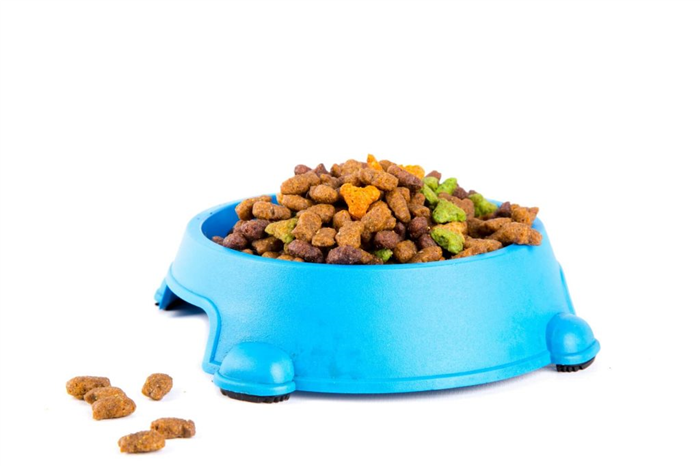
Do Cockroaches Eat Pet Food?
They love it. This is the perfect food source for pests. Pet food is rich in a variety of nutrients and minerals to help your pet be healthy, and it can serve as a great meal to cockroaches and other pests. Especially the dry pet food.
Improper storage of pet food or leaving the pet’s bowl full of food at night can easily attract cockroaches to your home. If you are not feeding your pet just the right amount of food at a certain time, but just leave its bowl full so they can eat at any time is one of your biggest mistakes.
If you keep your pet food in open bags or boxes, this also means easy access to pests. You should try storing the food in plastic containers and close them tightly.
Baby roaches eat whatever their mothers eat. They do not need any special nurturing from their mothers. They are ready to eat whatever the adult roaches eat.
Cockroaches can live up to a month without food and less without water. If your home gives them enough water but not enough food for all of them, they turn to cannibalism.
The stronger ones will eat the young ones. However, if an adult bug is dead, young ones will eat it too.
This is actually not a bad thing for people, as this way they are limiting their population. Another reason this is good is that if a roach dies because it was poisoned, the ones who eat it will die too. This can lead to the majority of the nest dying off.
When Do Cockroaches Eat?
Unlike many other bugs, cockroaches are actually afraid of light and movements. That’s why they are most active during the night. Cockroaches eat when the house is dark and quiet. They come out at night scavenging for food and water. They have a specific rhythm and usually come out about four hours after the lights are out. They will start roaming your house in search of any food they can find – breadcrumbs on the floor or table, pet food, garbage, any food left that they have easy access to. They can come out during the day too but that’s rare occasions. It can mean either that you have a serious case of infestation and they are no longer scared to come out during the day, in that case, you might have to look for cockroach exterminator. Or that there is a scarcity of food during the night and they are forced to come out at daytime to search for it. Cockroaches are a major threat to your home because they can be the carriers of many dangerous bacteria and diseases. Some pass through or live inside sewers, dumpsters and other extremely unhygienic places and then come to your home and walk on everything. They may be spreading harmful bacteria all over your home. What is more, they are proven to cause diseases such as Dysentery, Typhoid fever, Poliomyelitis, Cholera, and more. They are also linked to germs such as streptococcus and staphylococcus, and many more.
What Health Problems Do They Cause?
They can also cause allergies, or cause people with allergies to have more severe symptoms. Symptoms of allergic reactions to cockroaches are watery or red eyes, swelling under the eyes, sneezing and runny nose, rashes, heavy breathing and more intense asthma symptoms. Their saliva, direct contact, shed body parts and droppings can activate any allergic reaction.
Cockroach Control and Prevention
- After every meal, wash your dishes right away, vacuum daily.
- If possible, seal all cracks in walls, and near pipes and windows.
- Store food in tightly closed containers or in the fridge.
- Keep your garbage and waste products in a rubbish bin with a lid and take it out often.
- Use liquid soap instead of a bar of soap so cockroaches can’t use it as food.
- In case you try cockroach treatments on your own and they fail, you should turn to a professional pest company before the infestation has reached its peak.
Is there any of the above-mentioned food in your home that’s easily accessed by cockroaches? Have you noticed one or more roaches roaming your home? You can read more about our cockroach treatment or get a free quote by using the button below!
What Do Cockroaches Eat?
Cockroaches pop up in homes and businesses around the world, drawn in part by the easy food sources they find in them.
Though cockroaches can live a long time without eating anything, they spend most of their time either eating or looking for food, and food drives a lot of their behavior.
That’s good news for you, because understanding what and how they eat is one of the keys to controlling them.
So what do cockroaches eat?
A Simple 5-Step Guide For Getting Rid of Roaches
“Print or Follow on Your Phone. It’s FREE!”
Like certain other insects, cockroaches are omnivorous creatures, happily eating both plant and animal matter.
They’re also dedicated scavengers and some of the least picky eaters in the animal kingdom. Just about everything digestible by humans can be food for roaches – and a whole lot more. If it comes from an animal or plant, chances are that cockroaches will eat it, including food that we eat and a lot of material (like paper, clothing, books, and roach droppings) we don’t.
Cockroaches Eat Human Food, Everywhere They Find It
Cockroaches not only seek out human food, but seem to prefer some of the foods we like most.
They like greasy foods (like french fries and things covered in butter and bacon grease), starches (like breads and cereal), meat products, and sweets. They even like beer so much that it makes for a very nice lure in a homemade cockroach trap.
But the thing to keep in mind about roaches is that controlling them hinges less on knowing their favorite foods than on denying them any food at all.
Here’s the ugly truth about a typical cockroach diet – the where and what of stuff they like to eat:
Food on Kitchen Surfaces
With food and water everywhere, cockroaches love kitchen surfaces. Countertop crumbs make a great midnight snack and roaches will target any fresh or processed food items that you leave out.
A few pieces of pasta or some stray vegetables in the sink are sure to attract cockroaches, and provide plenty for them to eat. Even a small splatter around a stove burner can feed them, too. Unsealed leftovers are a treasure trove for roaches, as are dirty dishes.
Food in Your Pantry
Chips, cereal, sugar and other pantry items are like a steak dinner to a bunch of roaches. They’ll chew through paper, cardboard, or even thin plastic containers to reach the edible contents inside.
Keep in mind that as soon as a package of food is penetrated by a roach, it should be considered contaminated. These bugs come from all kinds of unpleasant places and pick up lots of bad bacteria along the way. They truly live in places most people wouldn’t even defecate in.
Crumbs on Your Floor
When dealing with cockroaches, you have to get down on their level–that means focusing on the floor.
Roaches spend most of their active time crawling around on the ground. Even flying cockroaches usually stick to their feet when they’re out in search of food.
Carpets collect food morsels like it’s their job. And hunting for crumbs basically is a roach’s job. Your carpet doesn’t have to be dirty to trap plenty of crumbs for a cockroach. With its strong sense of smell, a roach will find every crumb that’s there.
Your Pet’s Food
All things considered, pet food is pretty close to human food (at least from a cockroach’s perspective). As a bonus perk for roaches, pet parents often leave a bowl of dog or cat food out overnight. That’s like leaving a buffet out for pests.
Even if your hungry pet leaves an empty plate, crumbs and residue are enough to satisfy a cockroach.
Your Store or Restaurant’s Reputation
Kitchens are cockroach hotspots for a reason: there’s food everywhere! And what other places have food everywhere? Restaurants and grocery stores.
A roach infestation in a restaurant or market can be devastating to the business’s reputation. Unfortunately, commercial spaces deal with so much food on a daily basis that it may be impossible to keep everything spotless.
That’s why restaurants and grocery stores are at higher risk of having cockroach problems. If you’re a business owner, it’s wise to have a professional pest control company inspect and treat your property regularly to keep roaches out and bring customers in.
What Else Do Cockroaches Eat?
Cockroaches eat much more than just the things we consider edible.
Roaches’ ability to digest cellulose lets them eat all kinds of paper materials and even some clothing. They’ll nibble on newspapers, book bindings, documents and cardboard boxes. Some cockroaches eat the glue on wallpaper and stamps, too.
The American cockroach and other outdoor species of cockroaches feed on piles of leaves, twigs and dead trees. Just about any decaying organic matter is fair game. That also includes skin flakes, hair and fingernails.
Many other roaches feed on roach or other animal droppings. Between garbage, dead insects and feces, there’s just about nothing organic that cockroaches won’t eat.
How Can Roaches Eat so Many Disgusting Things?
Cockroaches enjoy a symbiotic relationship with some kinds of bacteria that live in their digestive systems. The bacteria use the roach as a host and in return, provide the roach with nutrients and help it to digest many nasty substances.
One study found that a huge part of the genome of American cockroaches is dedicated to metabolizing toxic or dangerous materials. Their bodies have adapted over millions of years to surviving in harsh conditions and eating whatever’s available.
Cockroach Pest Control – Time to Act Fast
Cockroaches can spread illnesses and contaminate food in homes and businesses. It’s important to have a solid pest control plan in place to protect yourself from these bugs.
Effective pest control starts with knowing where to find cockroaches. Focus your search on your kitchen and bathroom, looking for tiny crevices and in cluttered cabinets.
In the end, the best way to keep cockroaches out of your house is to clean diligently and make it as hard as possible for them to find food. If they can’t find dinner in your home, they’ll look somewhere else.
It’s important to get rid of cockroaches as quickly as possible. You can do it on your own with baits, natural pesticides and perseverance. Boric acid and food-grade diatomaceous earth are two products that you can use to kill cockroaches at home.
Or, you can call in the experts.
Remember, roaches are expert survivalists that spread quickly. They’re tough opponents! If you’ve seen more than a couple of roaches, it could mean a cockroach infestation, in which case your best bet is to hire a professional pest control service to get rid of them.
In the end, the best way to keep cockroaches out of your house is to clean diligently and make it as hard as possible for them to find food. If they can’t find dinner in your home, they’ll look somewhere else.
Frequently Asked Questions
Yes. At least some cockroaches eat cockroaches. The Oriental and German cockroach will not only eat their dead (anytime), but when food is scarce – eat their eggs and young. And just like black widow spiders, American cockroach females will sometimes kill and eat their mates.
Some cockroaches will eat clothes. These bugs feed on skin flakes and food crumbs, both of which become caught in the clothing we wear. Roaches might try to feed on dirty clothing if there’s no other food available. Enough roaches could damage the fabric.
Yes! Even things your dog wouldn’t dream of eating can potentially be food for roaches–and that’s saying something. A few dog food pellets left out overnight is an easy snack for a cockroach (or ten).
Cockroaches like cat food just as much as dog food, and don’t care if it’s moist or dry. To keep them out of it, you either need to get rid of the roaches or cover the cat bowl any time it’s not completely clean.
Yes, including the hair in your hairbrush, your drain, or that’s fallen to the floor. They’ll also eat eyelashes, shaving stubble, or any kind of body hair.
Roaches are one of the worst paper eating insects and will happily consume newspaper, copy paper, receipts, cardboard boxes, photographs, and any other kind they can find.
Feces is a rich source of nutrients for cockroaches and they’ll eat it wherever they find it. This includes dog feces, cat feces, and rodent droppings.
Cockroaches aren’t like termites that consume and destroy wood structures. But some cockroaches do seek out and eat dead trees, rotten wood, and similar decaying matter.
Some cockroaches will both eat and live in grass clippings, especially as the grass decays and becomes easier to digest.
There’s no evidence to suggest that cockroaches either like or dislike spicy food. They’ll eat most crumbs or bits of spice they find as they would any other food.
Roaches will gladly eat sugar and things that contain it. Some roaches have developed an aversion to glucose, a particular kind of sugar, but are currently the exception, not the rule.
Cockroaches can chew through paper and plastic wrappers, sealed zip lock bags, paper and plastic grocery bags, and thin paper and plastic food containers. They can’t get into sealed glass food containers or sealed plastic food containers with thick walls .
Yes, cockroaches eat fruit, especially decaying fruit. Be sure to check the bottom of fruit bowls and trash cans where discarded fruit and fruit peels may have collected.
Cockroaches will readily eat coffee grounds if available. If you have a cockroach problem, you should clean up any that you’ve spilled.
Cockroaches have no trouble eating onions. If you’re looking for a cockroach deterrent, you’re better off looking elsewhere.
Roaches will eat other creatures, but aren’t known to eat living ants. They will gladly eat dead ants, however.
Cockroaches will certainly eat dead fleas where they find them, but don’t seek out living fleas.
Put out a bowl of salt, and no, a cockroach won’t touch it, simply because there’s no nutritional value in it and it could upset their body’s water balance. But salty foods? That’s a different story. Cockroaches will devour salty foods with as much gusto as non-salty foods. Do they like salty foods more? No, they don’t.
Yes, and they’ll not only eat the toothpaste itself, but any particles of food they find in it- including the toothpaste at the bottom of your sink and the toothpaste stuck in your toothbrush.
Mixed with sugar, baking soda is a natural, safe, and fairly effective cockroach killer. Roaches won’t be attracted to the baking soda itself, but will eat it along with the sugar.
Soap contains organic material that cockroaches will happily eat and digest.
Plants are a food source for many cockroaches, but if you’re worried about damage to your home or lawn plants, you can heave a sigh of relief. Roaches prefer dead and decaying plants to living ones, and actually help to environmentally break them down.
Cockroaches can’t eat through walls, but can squeeze through the tiny holes, cracks, and crevices that walls sometimes have. If your walls are well-sealed, cockroaches can’t get in.
Cockroaches don’t eat spray foam insulation, but can burrow through it. They can also pursue food sources (like the remains from other insects) that exist in compromised foam. If they were to eat the insulation itself, they’d likely die from the borate that’s typically mixed in.
Cockroaches don’t eat electrical wiring, but can be attracted to the wiring’s insulation. Electrical insulation is made from paper or cellulose, both of which a cockroach can easily digest. When that happens, the wiring can become exposed, shortening the lifespan of appliances and electronics.
Written by Andrew Martin. Reviewed by Rae Osborn, PhD.
Andrew Martin
Andrew writes for, and along with his daughter, publishes Cockroach Facts. You can read more about him here.
Dr. Rae Osborn holds Honors Bachelor of Science degrees in Zoology and Entomology, and a Master of Science in Entomology from the University of Natal in South Africa. She holds a PhD in Quantitative Biology from the University of Texas at Arlington, where her research was in Entomology. You can learn more about our contributors here.
What Are Cockroaches Attracted to Inside?
Cockroaches are omnivorous scavengers and will consume any organic food source available to them. Although they prefer sweets, meats and starches, they are also known to consume other items such as hair, books and decaying matter.
Cockroaches eat what is available to them: cockroaches that inhabit sewers feed on sewage, while species living on dead trees consume decaying wood.
How Long Can a Cockroach Survive Without Food?
When left with no water, cockroaches can live days to a week. When given water but deprived of food, some cockroaches can survive for months at a time. However, they will perish more quickly if given dry food but deprived of water.
Certain species of cockroaches have adapted to human lifestyles and food sources. American cockroaches can be found in food storage and preparation areas within human dwellings. They are also commonly found in kitchens, restaurants and grocery stores. They prefer moist locations within these structures and will infest basements during winter.
What Do Cockroaches Eat?
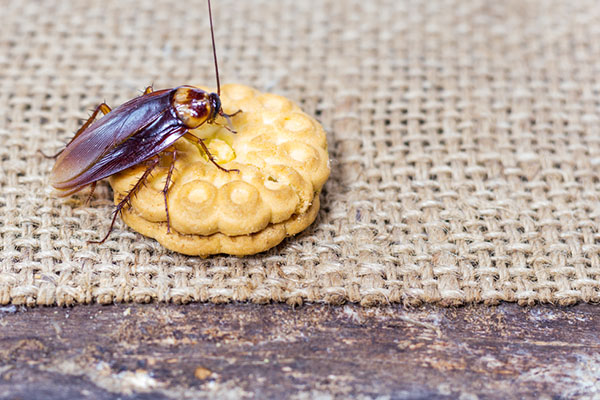
Instead of asking “what do cockroaches eat,” it might be easier to answer a question about what they don’t eat. Why? Because these scavengers are among the least picky eaters in the insect kingdom.
Cockroaches have three elements working together to make them such voracious eaters. First, cockroaches are omnivores. This means they eat both plants and animals, they don’t care. Second, cockroaches are opportunistic eaters. They’ll eat whatever you have in your home, as long as it also meets the third point: that the food be organic (i.e., not metal, plastic, etc.).
What do cockroaches eat first?
Cockroaches will devour most of the same foods you enjoy. After all, humans are omnivores too, so it’s no surprise we share similar tastes. That’s why you’ll find cockroaches in the kitchens, food storage and prep areas of homes with infestations.
Now, if your kitchen were a restaurant, cockroaches would definitely order certain types of foods before others. Sweets, starches and animal proteins are a roach’s favorite foods. They also like greasy food, cheese or anything that’s moldy or fermented. Take extra care to keep sugary foods in airtight containers, clean up your meat prep stations and wipe down your counter for bread and any other crumbs left behind. Cleanliness is a vital part of cockroach prevention.
If your “restaurant” is “out” of their favorite food items, cockroaches won’t just head over to the take-out place down the block. They’ll snoop around to see what else is on the menu, taking a taste of this and a bite of that along the way. Decaying matter gets their appetites going, so garbage and waste – even human waste – will serve as gourmet roach meals, as well as a few items in your home such as plants, soap and makeup.
What do roaches eat if nothing else is around?
Despite being omnivores like us, cockroaches see many other items as viable food sources, ones we’d never imagine. For example, when you think of adding a starch element to a meal, potatoes, bread or pasta come to mind. For cockroaches, the starch food group expands to include book bindings, paper, wallpaper paste and the glue on the back of stamps.
For protein, cockroaches view dead insects, animal skin (e.g., the soft inside of leather) and even human hair and fingernails as viable food sources. They’ll also eat their own young if food gets scarce enough. In fact, cockroaches have even been known to bite people, though it’s extremely rare and only happens when the infestation has reached cataclysmic levels.
Cockroaches are more likely to pick on calluses, eyelashes, dead skin flakes and fingernails, rather than living tissue. This is because cockroach jaws are rather weak. Their sideways-moving mandibles are great for carrying and chewing morsels of the typical cockroach diet, but these same jaws would have a hard time puncturing your skin. They have an easier time with keratin, a protein found in your nails and hair.
What do roaches eat if there is no food anywhere?
It’s rare that such an expedient scavenger like the cockroach would ever run out of food. Outdoors, cockroaches might eat decaying plants and dead wood. In sewers, they make the most out of the waste, sewage and water, especially since many species of cockroach thrive in moist, dark places. But even then, it’s not unheard of for a cockroach to be unable to find food, especially if the infestation has outgrown its resources.
So, what do roaches eat if there’s nothing around? Actually, nothing. Many species of cockroach can live up to a month without eating, though only if they have water. That’s the type of enemy you’re dealing with. Even if you put down roach traps and bait, even if you clean your home, that might not be enough to stop the roaches who are waiting just outside – or inside – your walls. You can’t starve them out. Only a pest management professional that can stand behind their guarantee and relentlessly protect your home will give you the ultimate advantage. What do cockroaches eat when Terminix® gets involved? Their last meal.
How Do You Get Rid of Cockroaches?
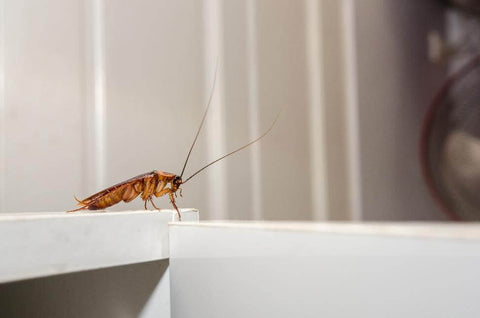
If you discover cockroaches, you’ll want to act quickly. Here are a few tips to help you eliminate a cockroach infestation.
- Remove Food Sources: Clean your kitchen, being careful to wipe up spills, grease, and crumbs on countertops, in cupboards, and underneath/between appliances.
- Eliminate Hiding Spots: Take time to remove potential sheltering spots for these pests. Remove empty boxes, newspapers, magazines, and other clutter where cockroaches can hide.
- Reduce Moisture: Repair or replace leaky plumbing, pipes, and faucets in your home and yard.
- Seal Cracks & Gaps: Check your home’s foundation for cracks and seal any you find. Make sure screens and weatherproofing are in good repair. Cover vents with mesh. Seal gaps between windows, doors, outer walls, and areas where utility hardware enters your house.
- Use a Plant-Based Insecticide Spray: Our Ant & Roach Killer and Home Bug Spray kill cockroaches on contact. They also provide residual repellency helping to deter cockroaches.
- Use an Insecticide Dust: Applying dust to areas where cockroaches have been seen can help to eliminate an infestation. Our Spider & Insect Dust and Bed Bug Killer can be placed in out-of-the-way areas including underneath countertops, inside cabinets, and in wall voids.
- Use a Bait: Our Roach Killer Gel bait can help to get rid of hidden cockroaches. The bait attracts and kills these pests. When cockroaches return to the nest and die, others will eat the carcasses and the bait.
Got tips and tricks to get rid of cockroaches at home? Post a comment. We’d love to hear from you!

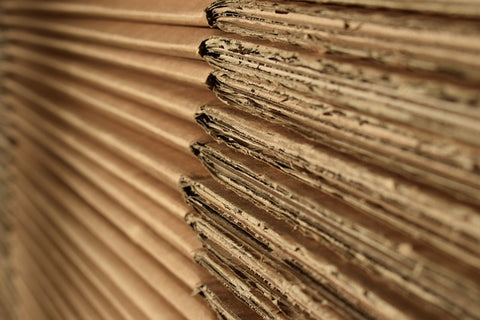
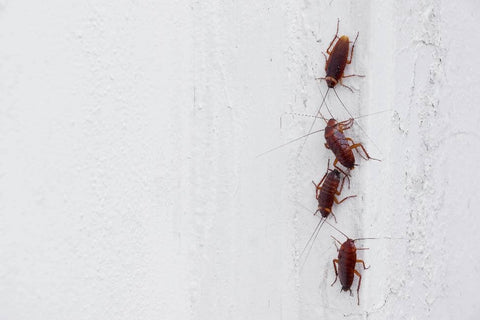
For scientifically-tested, effective cockroach control in your home that is friendly to the environment, try Maggie’s Farm pest control products. Our promise is that our plant and mineral-based products are developed by scientists and seasoned pest control professionals to be the most effective.
